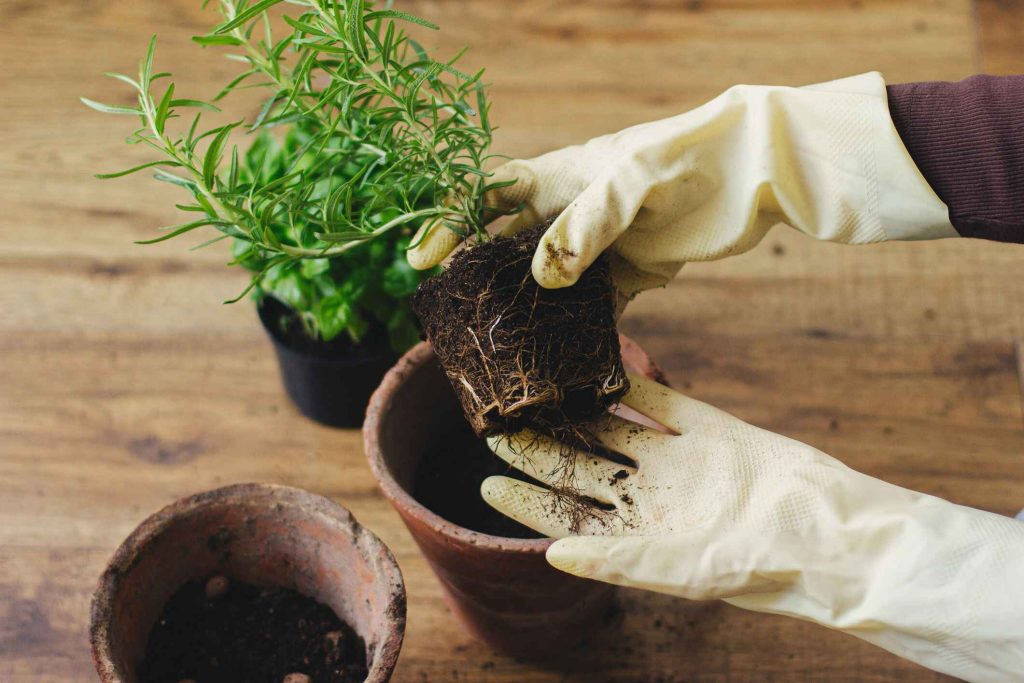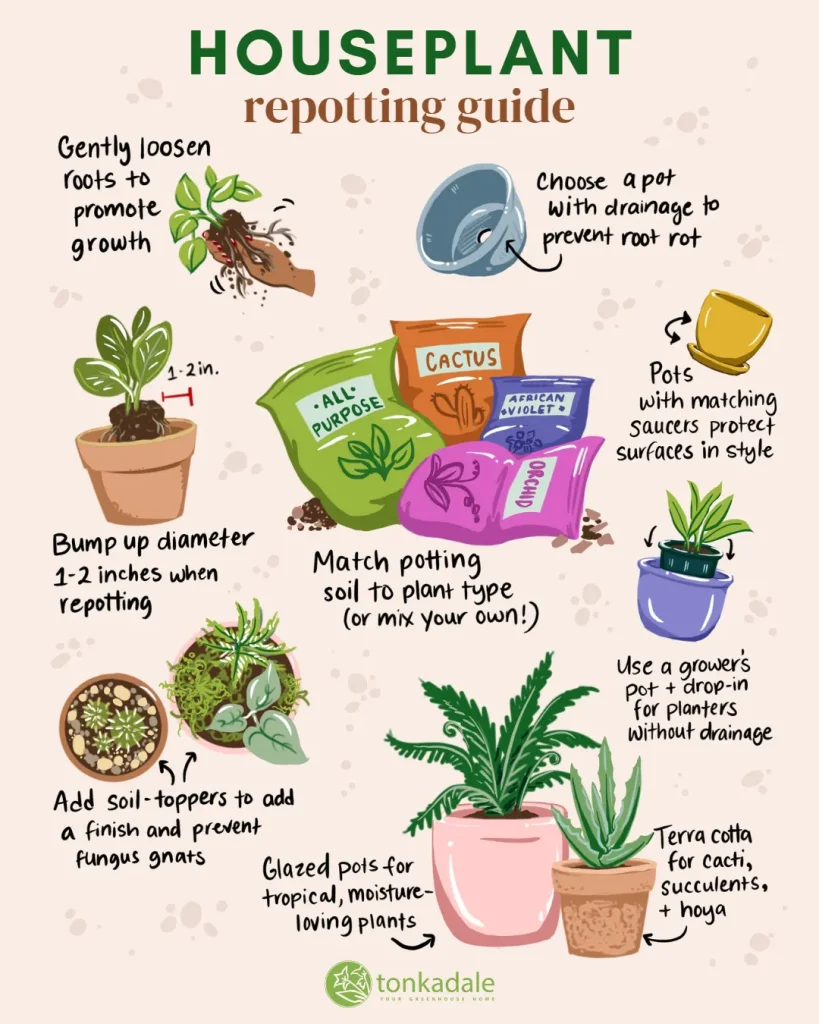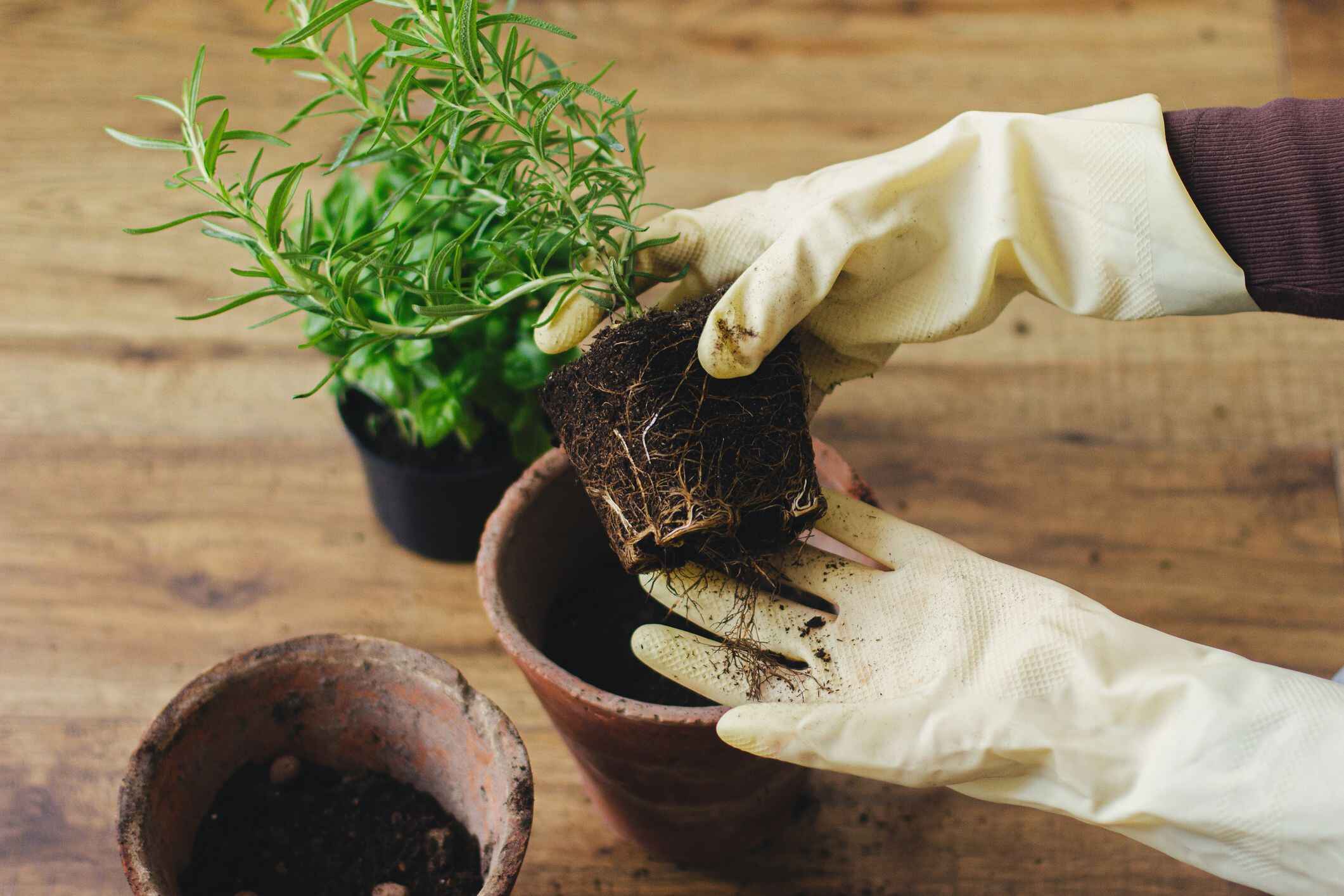Repotting indoor plants is a crucial aspect of plant care, ensuring they have the space and nutrients needed to thrive. However, when winter rolls around, many plant enthusiasts find themselves wondering:Can you repot indoor plants in winter? The short answer is ‘yes’ but you need to be super careful on doing that. With shorter days, lower temperatures, and many plants entering a period of dormancy, winter presents unique challenges to repotting.
In this article, we’ll explore whether repotting indoor plants during winter is a good idea, when it might be necessary, and how to do it successfully if the need arises. Backed by expert insights and practical tips, this guide is designed to help you make informed decisions and keep your plants healthy throughout the colder months.
By the end, you’ll not only know the risks and benefits of winter repotting but also discover alternative strategies and best practices to ensure your indoor garden flourishes, no matter the season. Let’s dive in!
Understanding Plant Dormancy in Winter
Indoor plants, like their outdoor counterparts, follow seasonal growth cycles that are influenced by changes in light, temperature, and humidity. During winter, many indoor plants enter a state of dormancy, a natural process where growth slows down or temporarily halts. This period allows plants to conserve energy and survive challenging environmental conditions.
Dormancy is a critical consideration when thinking about repotting. Plants in this state have reduced metabolic activity, meaning they don’t actively grow roots or absorb nutrients as efficiently as they do in the growing season. Disturbing their roots during this time can stress them, potentially leading to slower recovery or even plant decline.
However, not all indoor plants experience dormancy in the same way. For example:
- Tropical Plants like pothos or philodendrons may continue growing in warm, stable indoor environments, albeit at a slower pace.
- Cacti and Succulents often enter deep dormancy in winter and are especially sensitive to root disturbance during this time.
- Evergreen Houseplants like the peace lily or Chinese evergreen may show minimal dormancy but still prefer being left undisturbed.

Understanding your plant’s dormancy habits is crucial. By observing signs of dormancy—such as reduced growth, yellowing leaves, or shedding older foliage—you can better determine whether repotting is appropriate or if it’s wiser to wait until the active growing season.
This foundational knowledge ensures you’re making plant-care decisions grounded in biological principles, enhancing both the health of your plants and your confidence as an indoor gardener.
Reasons to Repot in Winter
While winter is not the ideal season for repotting indoor plants due to their dormant state, there are certain situations where it becomes unavoidable. Recognizing these circumstances ensures that you act in your plant’s best interest, even during the colder months.
1. Addressing Emergencies
One of the most compelling reasons to repot during winter is to save a struggling plant. Emergencies such as root rot, severe pest infestations, or fungal infections often demand immediate intervention. In these cases, leaving the plant in its current pot could exacerbate the issue and lead to irreversible damage. Repotting into fresh, sterile soil and a clean pot can halt the spread of the problem and give your plant a fighting chance.
2. Overcrowded Roots (Root-Bound Plants)
If you notice that roots are circling the bottom of the pot, growing out of drainage holes, or causing the plant to lift from its container, your plant may be root-bound. This lack of space restricts access to water and nutrients, putting undue stress on the plant. Even in winter, repotting a severely root-bound plant into a slightly larger pot can alleviate this stress and promote healthier growth in the long run.
3. Soil Degradation
Over time, potting soil can become compacted, lose nutrients, and fail to drain properly. Poor soil quality often leads to waterlogging and weak root development. If your plant is showing signs of decline due to poor soil, repotting in winter can refresh its growing environment and improve its overall health.
4. Preparing for the Growing Season
In some cases, late-winter repotting can be beneficial, especially for plants that show early signs of awakening from dormancy. Repotting at this time gives them a nutrient-rich foundation just as they gear up for active growth in spring.
Windy Sprouts’ Tip: Prioritize the Plant’s Needs
Repotting in winter should always be a calculated decision based on urgency. Assess the plant’s condition thoroughly before proceeding, and avoid repotting solely for aesthetic reasons. By focusing on the plant’s health and survival, you can make decisions that align with its natural rhythm, ensuring long-term vitality.
Risks of Winter Repotting
Repotting indoor plants during winter comes with its own set of challenges. Plants are naturally less active during this time, and disturbing them can lead to unintended stress and complications. Understanding these risks will help you make informed decisions and avoid causing harm to your plants.

1. Increased Stress on Plants
During winter, most indoor plants slow their growth or enter dormancy. In this state, they are less equipped to handle the shock of repotting. Disturbing the roots—especially during a time of low metabolic activity—can hinder the plant’s ability to recover and adapt to its new environment. This stress can manifest as wilting, yellowing leaves, or even stunted growth that persists into the growing season.
2. Limited Recovery Capacity
The cooler temperatures and shorter daylight hours in winter mean your plants have fewer resources to bounce back after being repotted. Root growth is slower, making it harder for the plant to establish itself in the new soil. Additionally, the lack of active nutrient uptake can leave your plant vulnerable to nutrient deficiencies or water imbalances.
3. Environmental Challenges
Winter indoor environments often pose unique challenges that can exacerbate the stress of repotting:
- Low Humidity: Indoor heating systems tend to dry out the air, making it harder for plants to retain moisture.
- Temperature Fluctuations: Drafts from windows or heating vents can cause inconsistent temperatures, which can shock newly repotted plants.
- Reduced Light: With shorter days and weaker sunlight, plants struggle to photosynthesize effectively, further delaying recovery.
4. Potential Root Damage
Handling plant roots during winter repotting requires extra care. Roots are particularly sensitive in colder months, and any damage can take significantly longer to heal. If roots are over-trimmed or disturbed too aggressively, the plant’s ability to absorb water and nutrients may be compromised.
Windy Sprouts’ Tip: Know When to Wait
If the plant isn’t showing signs of urgent distress—such as root rot or severe overcrowding—it’s usually better to postpone repotting until spring. Waiting allows the plant to recover in optimal conditions, minimizing risks and promoting healthier long-term growth.
Best Practices for Winter Repotting
If repotting in winter is unavoidable, following the right techniques can minimize stress on your plants and increase their chances of a smooth recovery. By creating a favorable environment and handling the process with care, you can support your plant’s health even during this challenging season.
1. Choose the Right Time
While winter repotting isn’t ideal, timing within the season can make a difference. Aim for late winter, when plants may begin to emerge from dormancy and show early signs of growth. This increases their ability to adjust to new soil and pot conditions.
2. Prepare the Environment
Indoor conditions during winter can be harsh on plants, so it’s essential to create an optimal setting:
- Provide Adequate Light: Place the plant in a bright spot, or use grow lights to compensate for reduced natural light.
- Maintain Consistent Temperatures: Keep the plant away from cold drafts, heating vents, or sudden temperature changes.
- Boost Humidity Levels: Use a humidifier or place a tray of water near the plant to counteract dry indoor air.
3. Handle the Plant with Care
Gentle handling is crucial to avoid unnecessary damage to the roots or stems:

- Loosen Roots Carefully: Remove the plant from its pot and gently untangle any circling roots without tearing them.
- Use Fresh, High-Quality Soil: Choose a well-draining potting mix suited to your plant’s needs, such as a cactus mix for succulents or an organic blend for tropical plants.
- Repot into a Slightly Larger Pot: Avoid oversized pots that can lead to overwatering issues. A pot 1–2 inches larger in diameter is sufficient.
4. Water Sparingly Post-Repotting
Plants require less water in winter due to reduced growth, so avoid overwatering after repotting. Allow the soil to dry slightly before watering and monitor for signs of water stress, such as drooping leaves or excessively dry soil.
5. Avoid Fertilization Immediately
Repotting provides fresh soil with nutrients, so avoid adding fertilizer right after the process. Fertilizing during dormancy can overwhelm the plant and lead to salt buildup in the soil. Wait until spring to resume fertilization.
Windy Sprouts’ Tip: Monitor Your Plant Closely
After repotting, observe your plant for signs of stress, such as wilting or discoloration. Adjust light, water, or humidity levels as needed to support its recovery. With proper care, even winter-repotted plants can thrive and regain their strength by spring.
Alternatives to Winter Repotting
If repotting your indoor plants during winter feels risky, there are several alternatives you can consider to support your plant’s health until spring. These methods allow you to address minor issues and provide better care without causing unnecessary stress to the plant during its dormant phase.

1. Top-Dressing the Soil
Instead of fully repotting, you can refresh the top layer of soil. Remove 1–2 inches of the old soil from the surface and replace it with fresh, nutrient-rich potting mix. This method improves soil quality and nutrient availability without disturbing the roots.
2. Prune and Trim as Needed
Address overcrowding or damaged foliage by trimming dead or unhealthy leaves and stems. For root-bound plants, gently prune any visible roots growing out of drainage holes or around the pot’s base. This light maintenance helps manage plant health until a full repotting is possible in the growing season.
3. Adjust Watering Practices
For plants showing signs of poor drainage or soil compaction, modify your watering routine. Allow the soil to dry out slightly between waterings to prevent overwatering, which is especially harmful in winter. Pair this with a well-draining pot to minimize waterlogging.
4. Use Temporary Support
If your plant is outgrowing its pot but repotting isn’t feasible, consider providing temporary support:
- Stabilize Overgrown Plants: Use stakes or ties to keep tall plants upright.
- Add Supplemental Feeding: Use diluted liquid fertilizers sparingly to supplement nutrients if your plant shows deficiencies.
5. Wait for the Right Time
In most cases, waiting until spring to repot is the best course of action. Use the winter months to prepare by selecting the right pot, purchasing quality soil, and planning the repotting process. This ensures you’re ready to act when your plant is more resilient and conditions are optimal.
Windy Sprouts’ Tip: Patience Pays Off
Plants are naturally more adaptable and resilient during their active growth phase in spring and summer. By implementing these alternatives, you can provide the care your plant needs without disrupting its dormancy, ensuring it’s ready to thrive when the growing season begins.
Expert Tips for Post-Repotting Care
Successfully repotting indoor plants in winter doesn’t end with the process itself. The real challenge lies in how you care for your plant afterward. Post-repotting care is essential for ensuring a smooth recovery, especially when dealing with the slower growth and dormancy typical of the colder months. Here are expert tips to help your plant thrive after winter repotting:
1. Gentle Watering is Key
After repotting, it’s critical to strike the right balance with watering. Water the plant lightly to moisten the soil, but avoid overwatering, which can lead to root rot in the cooler, less active season. Monitor the soil’s moisture levels regularly and adjust your watering schedule based on the plant’s needs.
2. Hold Off on Fertilization
Resist the urge to fertilize your plant immediately after repotting. During winter, most indoor plants don’t actively absorb nutrients, and fertilizing too soon can overwhelm the roots and cause nutrient burn. Wait until spring, when the plant resumes active growth, to reintroduce a diluted fertilizer gradually.
3. Create a Recovery-Friendly Environment
Repotted plants need a stable and supportive environment to recover from the stress of the process:
- Light: Place the plant in a bright, indirect light location. Avoid exposing it to harsh sunlight, which can further stress the plant.
- Humidity: Increase humidity levels using a humidifier, pebble trays, or occasional misting to help the plant adapt to its new environment.
- Temperature: Keep the plant in a warm, stable spot away from cold drafts or heat sources like radiators. Fluctuating temperatures can slow recovery.
4. Monitor for Signs of Stress
Post-repotting stress is common, but knowing how to identify and address it can save your plant:
- Wilting Leaves: Ensure the soil isn’t overly wet or completely dry. Adjust watering accordingly.
- Yellowing or Dropping Leaves: Check for proper drainage and environmental conditions like light and humidity.
- No New Growth: Be patient; slow recovery is normal in winter. Avoid making additional changes that could add stress.
Allow Time to Adjust
Repotting in winter is a significant change for your plant. Give it time to adapt to its new pot and soil without frequently moving or disturbing it. Consistency is the key to a healthy recovery.
Winter repotting may not be the easiest decision for indoor plant enthusiasts, but understanding its nuances can make all the difference. While it’s true that most plants prefer to remain undisturbed during their dormant phase, emergencies or specific circumstances may leave you with little choice. By recognizing the risks, following best practices, and considering alternative solutions, you can ensure your plants receive the care they need, even in the colder months.
The key to successful plant care—whether repotting in winter or during the growing season—is informed decision-making. Always evaluate your plant’s condition and environment before taking action. With a little patience and preparation, you can keep your indoor garden thriving year-round.

